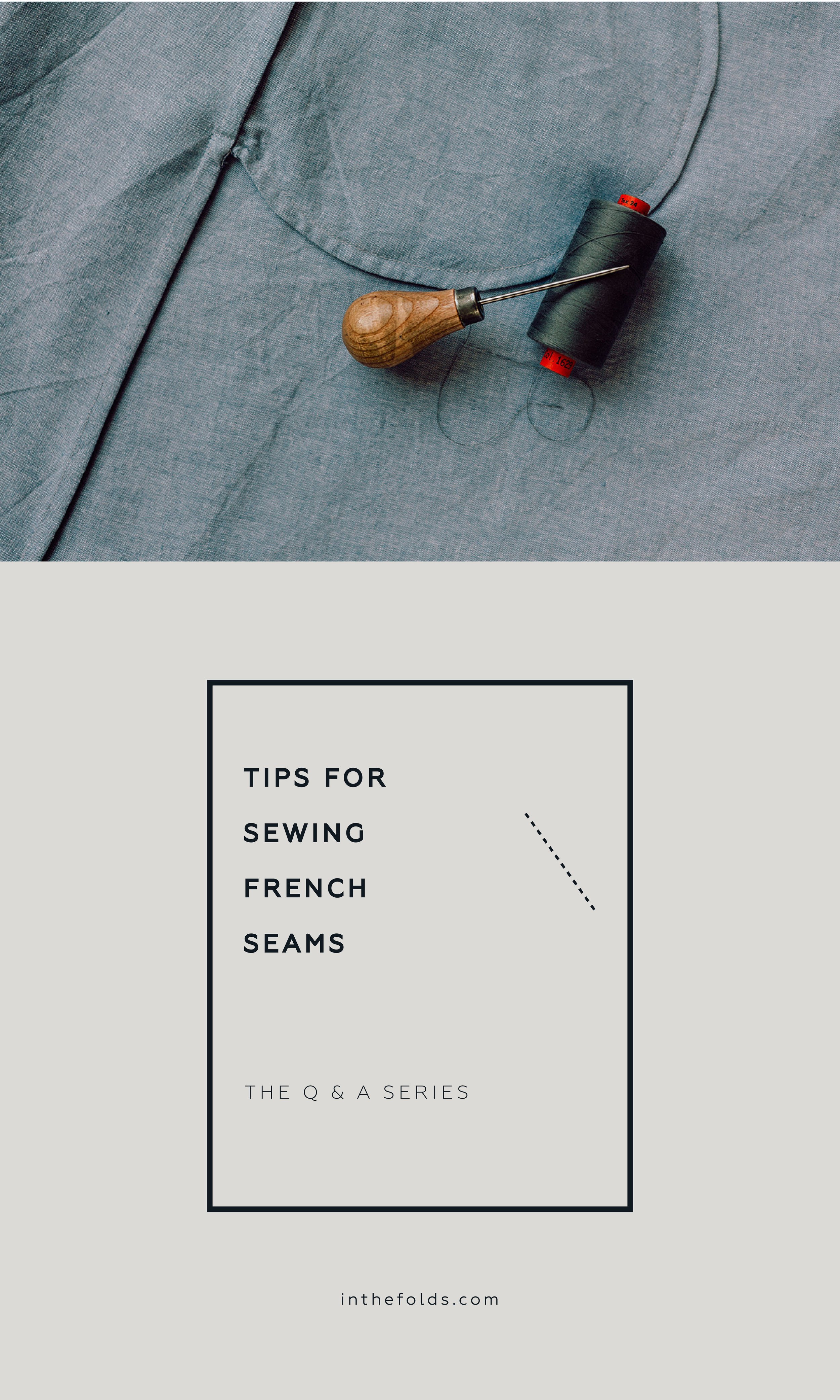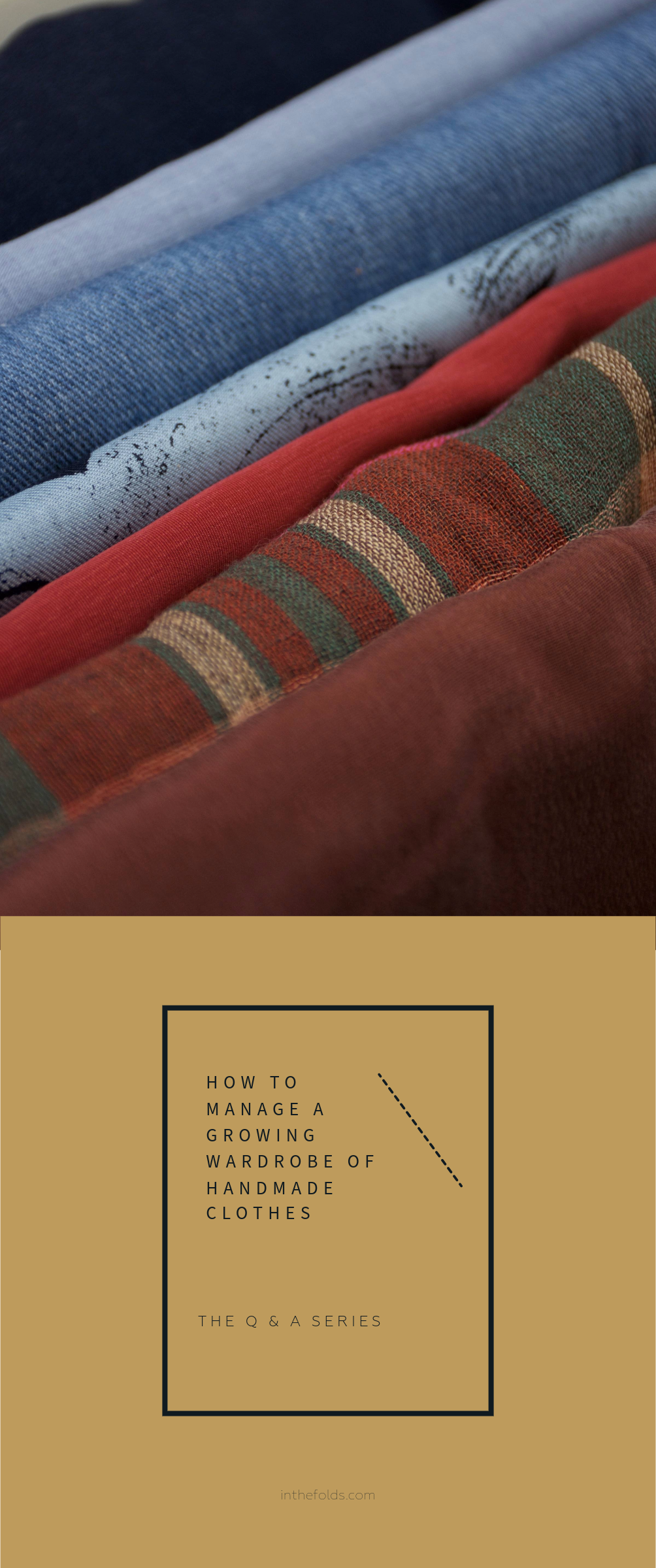THE Q & A SERIES
Tips for sewing French seams
Hi Emily,
I absolutely love French Seams but sometimes the seam allowance in a pattern doesn’t seem big enough for me to use them. I once made a top that came out too tight because of the French Seams!!
If I know I want to use French Seams for a garment that only has a 1cm seam allowance should I just cut it out a bit bigger? And how much bigger? Also, how do I get a neat finish when using French Seams in tricky places like around an armhole?
Thanks heaps.
- Kat
Hi Emily,
Will French seams work if i have a pattern with overall seam allowance of 5/8"? It seems this might be for a 4/8" seam, but i can't get my head around it!
- Dominique
Hi Kat and Dominique,
French seams are my favourite seam finish and I'm excited you would like to give them a go too!
What is a French seam?
French seams will give you a beautiful and clean finish, without the need for an overlocker / serger - so a great option if you do not have one.
They are great for light to midweight fabrics, especially those that are prone to fraying. French seams are also the best choice of finish if you are using a sheer fabric. Although French seams are more time consuming than using an overlocker / serger, they are very satisfying and give one of the most beautiful finishes possible.
Seam allowance required for a French seam
To sew a French seam, you will need a seam allowance of at least 1.2cm (1/2"). If you have a pattern with a 1cm (3/8") seam allowance, you will need to add 2mm around the edge of the pattern. You can do this by referring to this post about how to add seam allowance to a pattern.
If you have already cut out your pattern, you can trace another copy and add the correct seam allowance or add the seam allowance by marking it on the fabric when you have your pattern pinned in place.
Here at In the Folds, we use a 1.2cm (1/2") seam allowance for sewing French seams, as this keeps things consistent across all our patterns (as 1.2cm is a good seam allowance for a stitched and overlocked seam too).
You can also sew a French seam that has a 1.5cm (5/8") seam allowance though. All you need to do is sew the first seam with a larger seam allowance. I will explain more about this when I show you how to sew a French seam below.
How to sew a French seam
A Pin the pieces you are joining together with wrong sides together. Stitch with a 6mm (¼in) seam allowance.
If you are working with a pattern that has a 1.5cm (5/8") seam allowance, sew with a 1cm (3/8") seam allowance. You can now follow the rest of the steps as they are.
B Trim down the seam allowance by about half. Be careful to not leave any threads, as these can end up poking through the finished seam if you are not careful. Press seam allowance to one side.
If sewing a curve, it's very important the you trim down the seam as much as possible, as this will help you get the seam to sit nice and flat when it's finished.
C Turn the pieces so that the fabric now has right sides together and the raw edges are sandwiched in between the two layers of fabric.
Pin another seam, this time enclosing the raw edges inside the seam. Stitch with a 6mm (¼in) seam allowance.
Press seam allowance flat to one side. The direction will depend on where the seam is located on the garment, although generally seams are pressed to the back.
French seams on curved seams
You can definitely use French seams on curves, you just need to make sure you have trimmed down the seam well. Press the seam well and work in small sections when pressing and pinning. For example, when going around an armhole, press a section and then pin, rather than trying to press the whole thing at once. A pressing ham can help with this, or a sleeve board if you have one.
When sewing the curve, you will need to go nice and slow and regularly check that you haven't created any puckering. If you do accidentally end up with a pucker or two, it's not the end of the world. Simply unpick the stitches either side of the puckering (about 2-3cm either side) to release the puckers. Give the section a good press to make sure it's all sitting nice and flat and then stitch again.
Would you like to give French seams a go?
You can try this technique by sewing the Rushcutter dress (View B). You can even learn how to do French seams on in-seam pockets as pictured in this email (which has to be one of the most satisfying sewing techniques of all time).
We hope that after today's newsletter you will know exactly what you need to do to incorporate French seams into your next make!
Happy sewing,
Emily
For more issues of the Q & A series, you can check out the archive here.
What you’ve been making
Peppermint wrap top made by @sunbeamsews
Peppermint wrap top made by @eliza.jay
Neale jumpsuit made by @sewingwithkate













